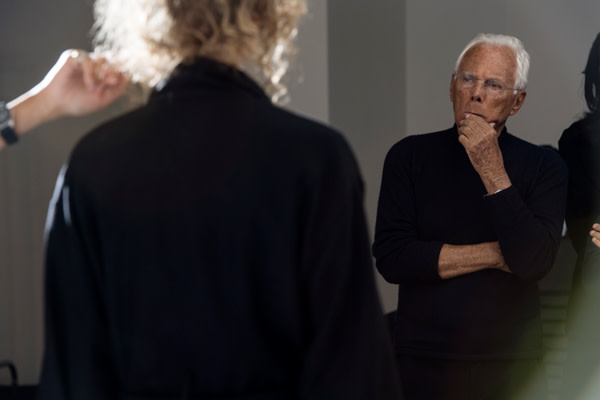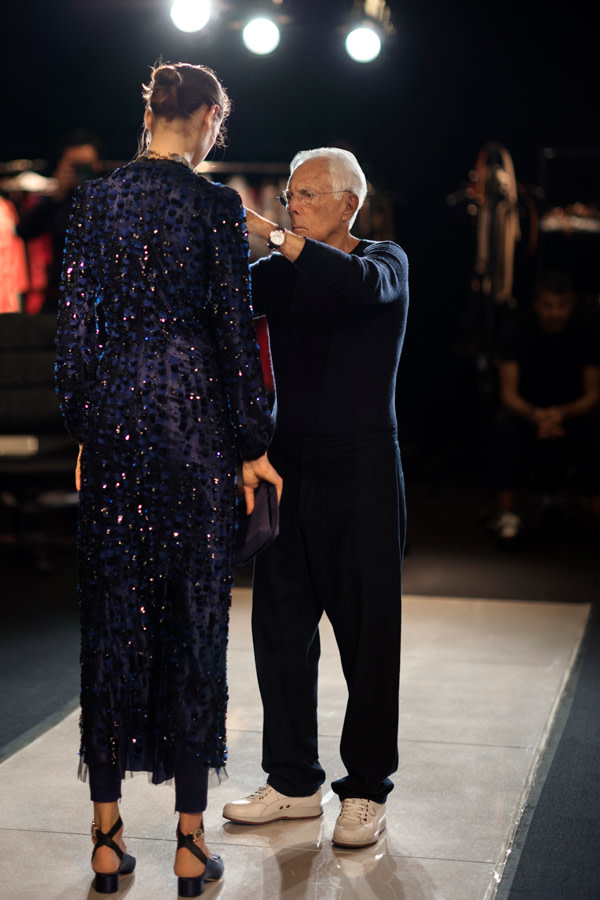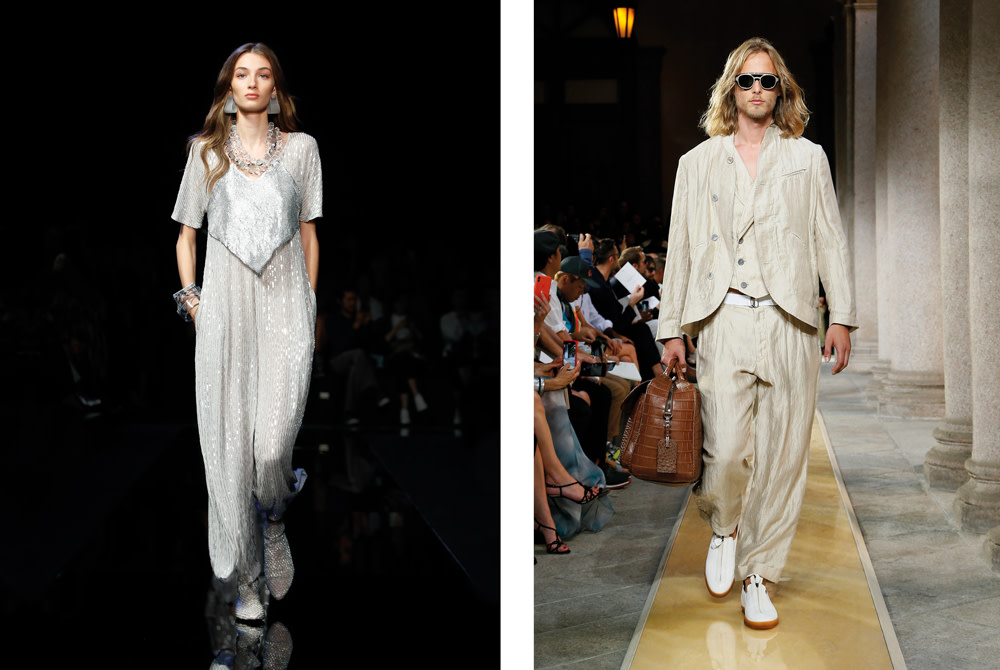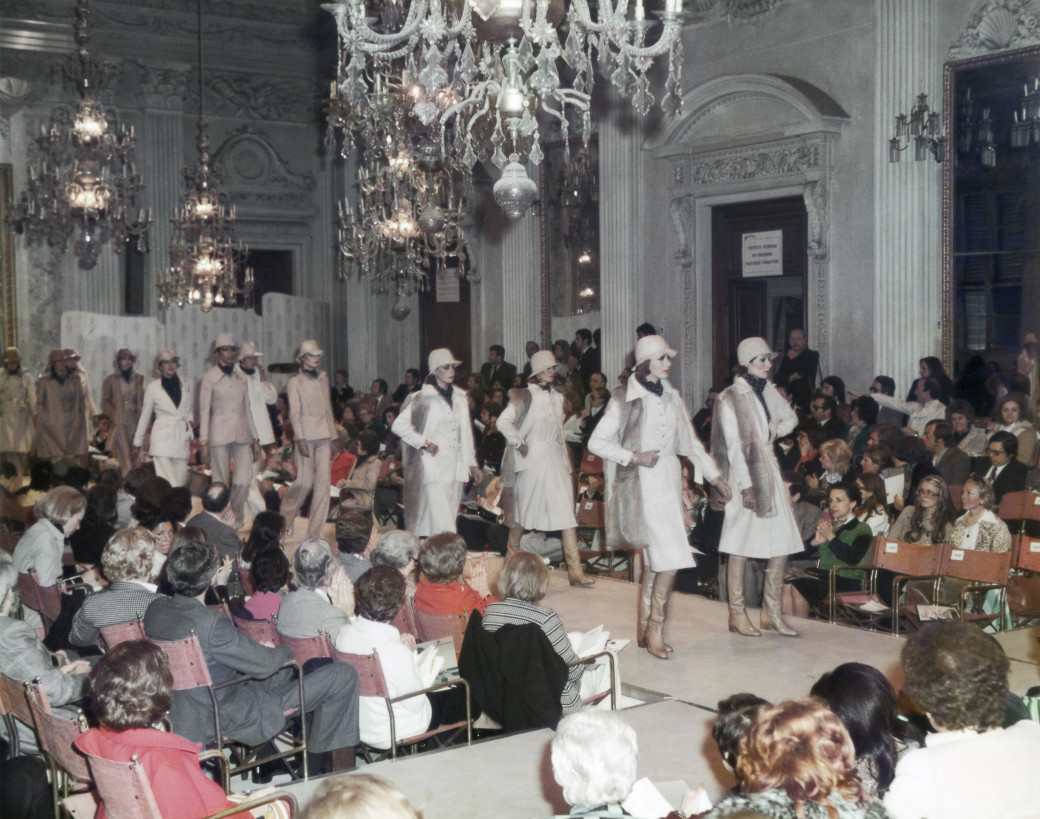Giorgio Armani. His fashion, his future, his strength, his Florence
The Lord of Italian Fashion in an intimate conversation all to read
In the past few months, we have all experienced a sense of disorientation, we suddenly found ourselves living in a helpless and motionless world. And then came some public ‘examples’ who showed us the way. Giorgio Armani is one of them. He was among the first in Italy to realize the gravity of the situation, by keeping his show behind closed doors during the February Fashion Week, closing his shops and allowing his employees to operate in smart working mode to safeguard their health.
Armani’s vision, however, was broader. During the lockdown, he helped our doctors on the front line by making substantial donations to hospitals, not only in Milan, but also in Rome, Piacenza (his hometown), Bergamo and Versilia and switched the production of his Italian factories to disposable gowns.
And as if that were not enough, he wrote an open letter, published in papers all over the world, hinting at how to face the future: “This crisis is a wonderful opportunity to slow down and realign everything and draw a truer horizon”. That is why, this time, in such an important issue, the cover features Giorgio Armani, who tells us about “his need to always look ahead”.
 This year, the designer decided to move the Armani Privé show from Paris to Milan (ph. Stefano Guindani Sgp)
This year, the designer decided to move the Armani Privé show from Paris to Milan (ph. Stefano Guindani Sgp)Looking back to your childhood experience at the end of World War Two, what inner resource has always helped you overcome difficulties?
My whole childhood was marked by the war, as my hometown, Piacenza, was heavily bombed because of its strategic position. At the end of the war, the city had suffered ninety-one raids and dozens and dozens of casualties. I lost two friends to a bombed-out house and, during another bombing raid, I threw my sister Rosanna to the ground and covered her with my body to protect her. I myself was injured in an explosion caused by some kids playing with gunpowder. I cried while I was being treated, but I had no intention of giving up. This unbending strength, this determination not to ever surrender- more instinctual than rational- this need to always look ahead is what got me through difficulties.
At the peak of the Covid outbreak, you wrote an open letter to denounce that designers are crippling under the pressure to keep up with the pace of fast fashion. What will be fashion’s role?
I believe that fashion will serve the purpose of regenerating our thoughts. It’s going to be the creative oxygen bringing fashion back to a more sustainable pace: spring/summer and fall/winter shows only, in order for retail offerings to be more coherent and consistent with seasons. Delivering winter collections in June is confusing and, above all, very little interesting for customers. Therefore, one of my top goals is that of slowing down to a less frenzied pace.
 Giorgio Armani’s headquarters is on Via Borgonuovo. The Armani Theater designed by Tadao Ando and the new Armani Silos exhibition space are located in Via Bergognone. (ph. Stefano Guidani Sgp)
Giorgio Armani’s headquarters is on Via Borgonuovo. The Armani Theater designed by Tadao Ando and the new Armani Silos exhibition space are located in Via Bergognone. (ph. Stefano Guidani Sgp)During this health situation, you’ve been a model and provided moral support not only to your company’s employees, but to Milan and Italy in general. What was your personal experience of the past few months?
I was worried, but also full of energy, for I felt an increasingly strong sense of responsibility, not only toward my company, my staff, the people who are part of my world, such as the Olimpia basket athletes who have honored the sporting and human values in which the team has always believed. But also toward my city, Milan, which has suffered so much, and toward my country, which seems in need of everything. That is why I tried make a concrete contribution through a number of initiatives, including factories converted to the production of disposable gowns.
What vocation and what stimuli led Giorgio Armani to become the symbol of Italian design?
I had no idea that I would become a symbol nor did I set it as a goal. What I wanted was to express the changing times through fashion. It was not simply a matter of introducing a new cut or new color trends, but rather of identifying needs and accompanying change and the social evolution that was taking place back then. And this is, I believe, what I’m still doing today.
 The 2020 S/S Emporio Armani collection (ph. Stefano Guindani Sgp)
The 2020 S/S Emporio Armani collection (ph. Stefano Guindani Sgp)Who was your muse?
There is a type of woman- brunette, inquisitive, intense, with a deep gaze- which I chose to represent the Armani style throughout the eighties. I believe that she was the woman who inspired me and had some characteristics that reminded me of my mother.
The “Made in Italy”, of which you are the greatest ambassador, is not a phenomenon in itself, but the perfect combination of many elements. What are, in your opinion, its key elements?
Creativity balanced with wearability, quality of fabrics and attention to production methods which should be increasingly sustainable.
 Sfilata ai 1975 Sala Bianca di Palazzo Pitti Firenze - courtesy of Giorgio Armani
Sfilata ai 1975 Sala Bianca di Palazzo Pitti Firenze - courtesy of Giorgio ArmaniHigh craftsmanship has always been at the core of your business. How can such an all-Italian resource be exploited in the future?
The most distinctive trait of Italian craftsmanship is the manual skill it requires to achieve the most sophisticated results and create items of the highest value which need to be respected and protected. Personally, I believe craftsmanship is indispensable and actually inseparable from high fashion, in order to infuse it with personality. I understand those who, for economic reasons, make different choices, but I think that we should resort to the beauty of craftsmanship whenever possible.
Italy and its masterworks reopen to the world. Giorgio Armani’s invitation to visit one of the world’s most beautiful countries.
Italy is waiting to be looked at with new eyes. Italy’s beauty lies also in its complexity and liveliness. Because in diversity is life.
From the first show in the White Room to today, what is your loveliest memory of Florence?
Florence is one of the places dearest to my heart, because I started off here, in the early seventies, by sending my collections down the White Room runway. Those were the last days of the White Room’s golden age, but this wonderful palace and its history could still make a fashion designer feel in awe. In Florence, I also established my first, major business collaborations. I went back to the Uffizi Gallery for the Fashion Biennale and I was thrilled and pleased to see my life and career represented in a show by Robert Wilson, G.A. Story. I have another special memory of Florence which I didn’t know, until recently, whether it was real or a dream. On a recent trip to Florence, in fact, I realized that Brunelleschi’s dome, with its reaching up to infinity, its amazing harmony defying all rules of architecture, is stamped in my memory. Just like the cloudless Renaissance-blue sky, as beautiful as a painting.









